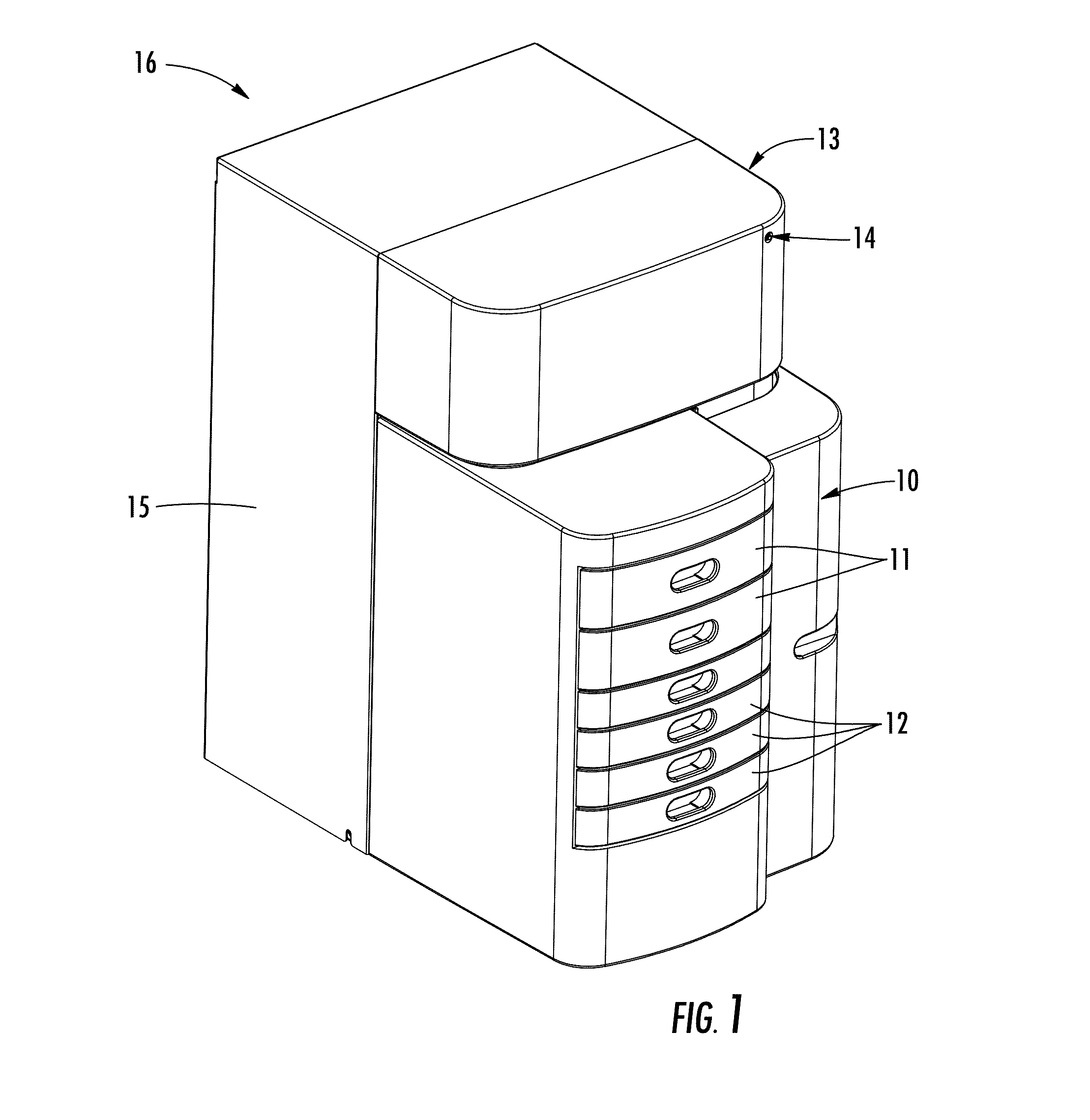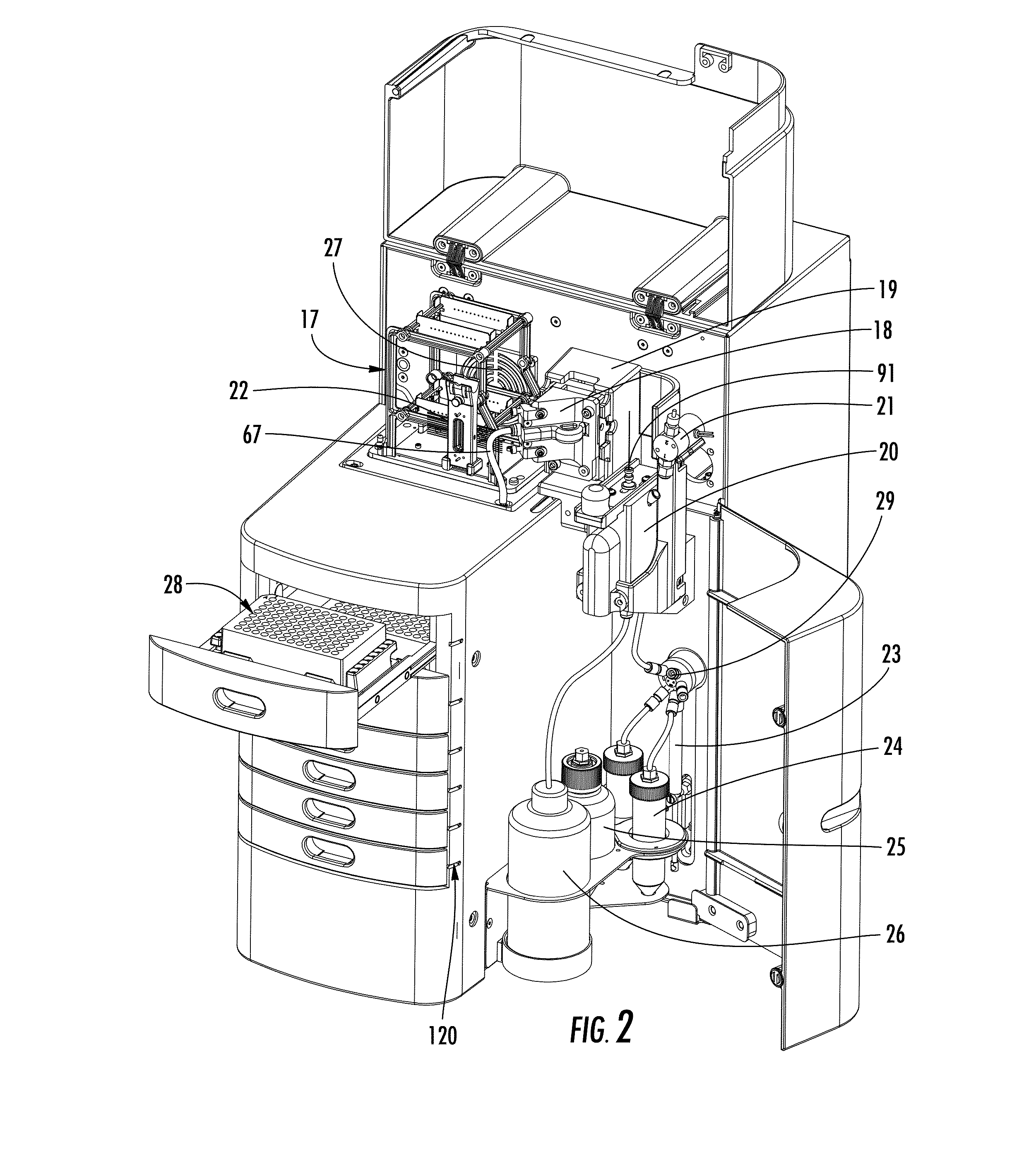Highly automated capillary electrophoresis system
a capillary electrophoresis and high-automatic technology, applied in the field of multi-channel capillary electrophoresis systems, can solve the problems of difficult integration, labor-intensive agarose gel electrophoresis, and inability to use agarose gel electrophoresis for accurate quantification of dna, etc., and achieve the effect of easy integration
- Summary
- Abstract
- Description
- Claims
- Application Information
AI Technical Summary
Benefits of technology
Problems solved by technology
Method used
Image
Examples
Embodiment Construction
[0050]The invention is a multiplexed capillary electrophoresis system with enhanced workflow. The capillary electrophoresis system and apparatus of the present invention includes an absorbance or fluorescence-based capillary electrophoresis sub-system with a light source, a method for carrying light from the light source to the sample windows of a multiplex capillary array containing at least 12 capillaries (preferably 96 capillaries), and a method for detecting light emitted (fluorescence) or absorbed (absorbance) from the sample windows of a multiplex array. The sub-system also includes a method for pumping buffers and gels through the capillaries, as well as a method for application of an electric field for electrophoretic separation. The optics of the fluorescent-based sub system of the present invention are described by Pang in United States Patent Applications 20070131870 and 20100140505, herein incorporated by reference in their entirety. The optics of an applicable absorbanc...
PUM
| Property | Measurement | Unit |
|---|---|---|
| length | aaaaa | aaaaa |
| diameter | aaaaa | aaaaa |
| distance | aaaaa | aaaaa |
Abstract
Description
Claims
Application Information
 Login to View More
Login to View More - R&D
- Intellectual Property
- Life Sciences
- Materials
- Tech Scout
- Unparalleled Data Quality
- Higher Quality Content
- 60% Fewer Hallucinations
Browse by: Latest US Patents, China's latest patents, Technical Efficacy Thesaurus, Application Domain, Technology Topic, Popular Technical Reports.
© 2025 PatSnap. All rights reserved.Legal|Privacy policy|Modern Slavery Act Transparency Statement|Sitemap|About US| Contact US: help@patsnap.com



